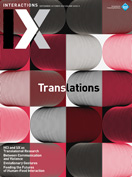Authors:
Ignacio Acosta, Arts Catalyst
What is the global impact of accelerated economic growth? What is the environmental and social impact of intensified growth in the tech sector and the continued proliferation of technologies that are ubiquitous in contemporary life?
Tales from the Crust builds on the artist Ignacio Acosta's ongoing research into extractive activities in Chile and Swedish Sábme. In Chile, as in Sámi areas in northern Sweden, mining activities by multinational corporations are both visibly and invisibly shaping the landscape and toxifying water, soil, and air while displacing agricultural and indigenous communities. The excavation, extraction, and exploitation of minerals—justified by the promise of immediate accelerated economic growth—means that spaces inhabited by communities become ravaged by desertification, contamination, and expropriation, becoming sites of political and environmental dispute.
 |
Satellite views of Chuquicamata corporate mining town, c. 2011. Atacama Desert, Chile. |
Tales from the Crust brings to light how activists and communities are making use of technologies in order to monitor the impacts of extractive industries and develop resistance strategies. Comprising documents, films, photographs, maps, and objects, Acosta's work homes in on the ways in which local and transnational acts of resistance are making use of technologies (such as drones) in order to monitor the impacts of extractive industries and develop micropolitical strategies.
Through in-depth visual and spatial exploration, the work represents a series of overlapping case studies of extractive violence. These include Parque Andino Juncal, an Andean conservation park currently fighting against mining exploration, and Caimanes, an agricultural town heavily affected by water contamination and scarcity courtesy of Latin America's largest toxic dam, El Mauro, from Los Pelambres copper mine.
In the film installation Litte ja Goabddá (Drones and Drums, 2018), Acosta explores how the Sámi indigenous communities are using drones as a way of resisting the mining exploration at Gállak in Jåhkåmåkke (Jokkmokk) in northern Sweden through an indigenous lens. Based on research visits and close collaboration with activists and Sámi families living and working in the area threatened by the mines, the project explores the link between drums and drones as navigation and communication tools.
This multifaceted spatial narrative is populated by the overlapping voices of activists, indigenous people, and archaeo-astronomers, bringing together a constellation of stances rooted in the distant to recent and present geographies of extraction, exploitation, and trauma. Here, filmed interviews, close-ups of resilient landscapes, and cartographies of global power expose forms of human and nonhuman resistance.
 |
Pajala abandoned mine. Swedish Sábme, 2018. |
Tales from the Crust is a part of the Extractable Matters program curated by Arts Catalyst. The program considers both the mineralogical and corporeal. It seeks to encompass anything that produces profit and value through being dug, removed, displaced, contaminated, and exploited. Extractable Matters is Arts Catalyst's ongoing inquiry into the politics of extractive practices, of their infrastructures and effects on a planetary scale.
Tales from the Crust brings to light how activists are making use of technologies to monitor the impacts of extractive industries.
Issues of translation run through Tales of the Crust and Extractable Matters at numerous levels. The artwork and program invite questions around how the molecular violence that mining companies are inflicting on land, minerals, cultures, and communities are translated for those immediately affected. They also seek to translate the micro- and macropolitical strategies of resistance enacted at the sites of material extraction, seeking to draw out the commonalities and specificities. Finally, both aim to engage a broader public, translating geographically situated projects of extraction and resistance for globally dispersed audiences often inured to the environmental and cultural damage their technologies inflict.
 |
Two-channel video installation with immersive sound design, Litte ja Goabddá, Arts Catalyst, 2019. |
 |
Demonstration outside Antofagasta PLC Annual General Meeting. Church House, London, England, 2013. |
 |
Mose Agestam at Burning Machine Festival. Gállak, Jåhkåmåkke, Swedish Sábme, 2017. |
 |
Installation view, Tales from the Crust, Arts Catalyst, 2019. |
Ignacio Acosta is a Chilean-born, London-based artist and researcher working primarily with documentary photography and film, in places made vulnerable through exploitation of ecologies by colonial intervention and intensive capitalization. His interconnected research projects involve extensive fieldwork, investigative analysis, visual documentation, and critical writing on sites and materials of symbolic significance. Recent projects in South America and northern Europe focus on resistance to extractivist industrial impact on valuable natural environments. [email protected]
Arts Catalyst works across art, science, and technology to produce ambitious new projects that critically engage with our changing world. The organization programs exhibitions, events, residencies, performances, and publications, often working in collaboration with national and international partner organizations from the fields of art, science, and academia. Arts Catalyst believes in the potential of artists and cultural organizations to be active agents of change, challenging how culture, science, and technology are defined, valued, and understood. [email protected]
Copyright held by authors
The Digital Library is published by the Association for Computing Machinery. Copyright © 2020 ACM, Inc.








Post Comment
No Comments Found